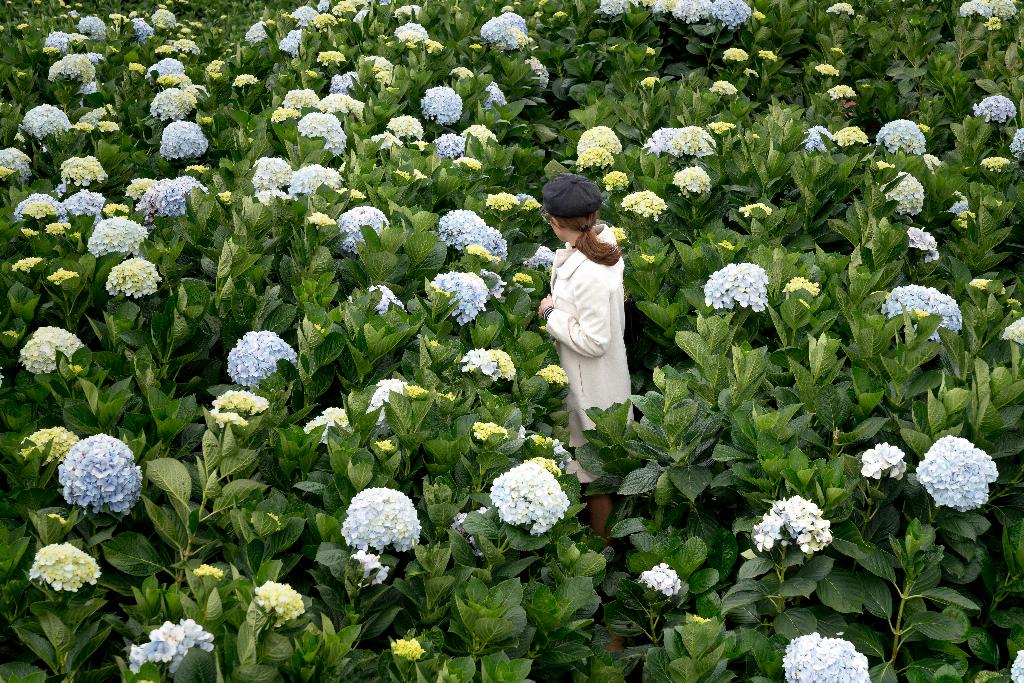If you’ve ever wondered how to change the color of a hydrangea, you’re not alone. This stunning flowering plant is known for its ability to display a variety of hues, from vibrant blues to soft pinks. However, the color of your hydrangea blooms largely depends on the pH level of the soil in which they’re planted.
The Role of Soil pH
Soil pH plays a pivotal role in determining the color of hydrangea flowers. Acidic soil, with a pH below 6.0, typically results in blue or lavender-blue blooms. On the flip side, alkaline soil, with a pH above 7.0, tends to produce pink or red flowers. If your soil falls within the pH range of 6 to 7, you can expect purple or bluish-pink blooms.
Steps to Change Hydrangea Color
If you’re looking to change the color of your hydrangea blooms, the first step is to test the pH of your soil. You can do this using a soil testing kit available at most gardening stores or by contacting your local agricultural extension office for assistance.
Lowering Soil pH for Blue Blooms
To achieve those coveted blue hydrangea blooms, you’ll need to lower the pH of your soil. This can be done by incorporating acidic amendments such as garden sulfur or aluminum sulfate into the soil around your hydrangea plants. Be sure to follow the application instructions carefully to avoid over-acidifying the soil.
Raising Soil pH for Pink Blooms
If pink hydrangea blooms are more your style, you’ll want to raise the pH of your soil. Adding lime to the soil can help increase its alkalinity, thereby promoting the formation of pink or even red flowers. Remember to monitor the pH levels periodically to ensure optimal conditions for your hydrangeas.
Consider the Desired Color
When deciding how to change the color of your hydrangea blooms, it’s essential to consider the hue you wish to achieve. Whether you’re aiming for a sky-blue display or a rosy pink arrangement, understanding the impact of soil pH on flower color is key to successful color manipulation.
Maintaining Optimal Soil Conditions
Once you’ve altered the pH of your soil to achieve your desired hydrangea color, it’s important to maintain optimal soil conditions to sustain the bloom color. Regularly testing the pH levels and making adjustments as needed will help ensure that your hydrangeas continue to thrive and showcase their vibrant hues.
Seasonal Considerations
Keep in mind that the color of hydrangea blooms can also be influenced by seasonal factors. For instance, cooler temperatures may intensify blue hues, while higher temperatures could enhance pink tones. By monitoring your hydrangeas throughout the growing season, you can observe how their color evolves and make adjustments accordingly.
Experimenting with Different Varieties
If you’re feeling adventurous, consider experimenting with different hydrangea varieties to explore a range of colors. From lacecap hydrangeas with their delicate blooms to mophead hydrangeas known for their voluminous petals, each variety offers a unique color palette that can add diversity to your garden.
Professional Advice
If you’re uncertain about how to proceed with changing the color of your hydrangea blooms, don’t hesitate to seek advice from gardening professionals or local nurseries. They can provide guidance tailored to your specific soil conditions and help you achieve the desired color transformation with confidence.
Enjoy the Blooming Process
As you embark on the journey of changing the color of your hydrangea blooms, remember to enjoy the blooming process. Whether you’re marveling at the vibrant blues of acidic soil or the soft pinks of alkaline soil, each bloom tells a unique story of growth and transformation that adds beauty to your outdoor space.

Conclusion
In conclusion, changing the color of a hydrangea is an exciting prospect that allows you to unleash your creativity and customize your garden’s aesthetic. By understanding the role of soil pH, experimenting with different varieties, and maintaining optimal soil conditions, you can successfully alter the color of your hydrangea blooms and create a visually stunning display that will captivate all who behold it.
